We’ve just returned from a 6 week long self-organised trip around Cuba. We’ll cover our thoughts about the country as a whole and pick out our highlights in subsequent posts, but for now, here’s our take on the cities and towns we visited:
Holguín
|

|
| Good for: |
Classic car spotting |
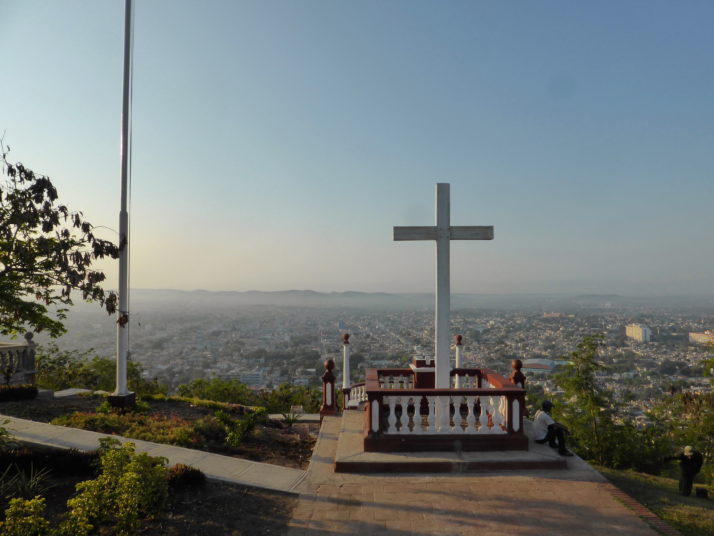
La Loma de la Cruz, Holguín
Holguín was our arrival city, direct from Manchester with Thomas Cook (
flights only). It’s a flat, easily walkable and navigable city with a renovated square, long pedestrian walking street, nice viewpoint and a disproportionately high number of classic American cars.
Holguín was the only place we’d pre-booked accommodation for from the UK, as we’d read that casa particular owners can help with onward travel plans, and I don’t know if our experience is common but it felt like we struck gold by
staying at Casa Oscar. He stayed up past 10pm (twice) calling casas the length of Cuba to reserve our beds! He cooks a mean fish dinner too..
Bayamo
|

|
| Good for: |
Arts and street performances |
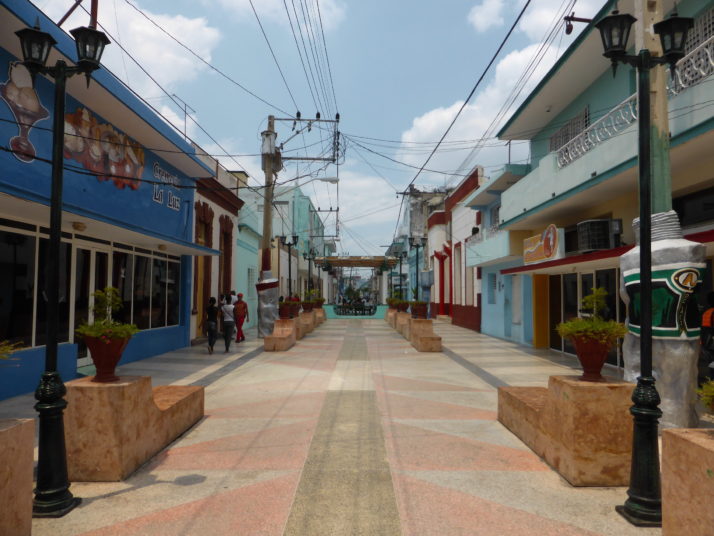
General Garcia (Paseo Bayamés), Bayamo
Bayamo has a quiet, small-town, artisitic vibe. We arrived in the midst of a literary festival and we left with the feeling that cultural events are
de rigueur. We hiked Pico Turquino in the Sierra Maestra, the highest point in Cuba, and Bayamo is the closest base to the park’s main entrance.
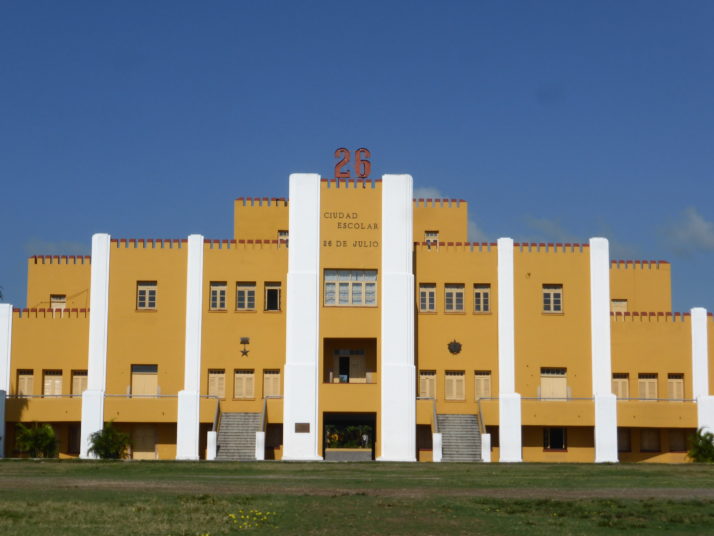
Moncada Barracks, Santiago de Cuba
We found a lot to see and do in Santiago, and it’s one of our favourite cities of the trip. The 16th century Castillo del Morro UNESCO fort was bereft of other tourists when we visited, the 19th century Cafetal la Isabelica coffee plantation is another significant UNESCO sight we enjoyed visiting and Fidel’s fledgling revolutionary force attacked the city’s Moncada Barracks, which is now a museum. We also spent a lot of time in Santiago’s impressive Santa Ifigenia cemetery which we think rivals the Necrópolis Cristóbal Colón in Havana.
Baracoa
|

|
| Good for: |
Laid-backness (yes, even more so than the rest of Cuba!) |
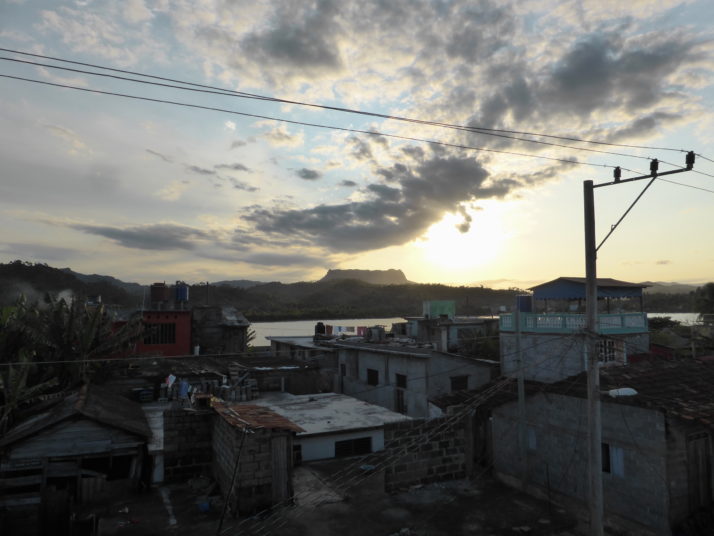
View of El Yunque (the Anvil) over the rooftops of Baracoa
At the far eastern end of Cuba is the small, sleepy town of Baracoa where we found an even more relaxed pace to the rest of Cuba. We did a little more hiking in the unique environment of Parque Nacional Alejandro de Humboldt, spent an afternoon chilling at the beach and ate a lot of the coconut-based sauce that Baracoa is known for!
Camagüey
|

|
| Good for: |
Plazas, market and churches |
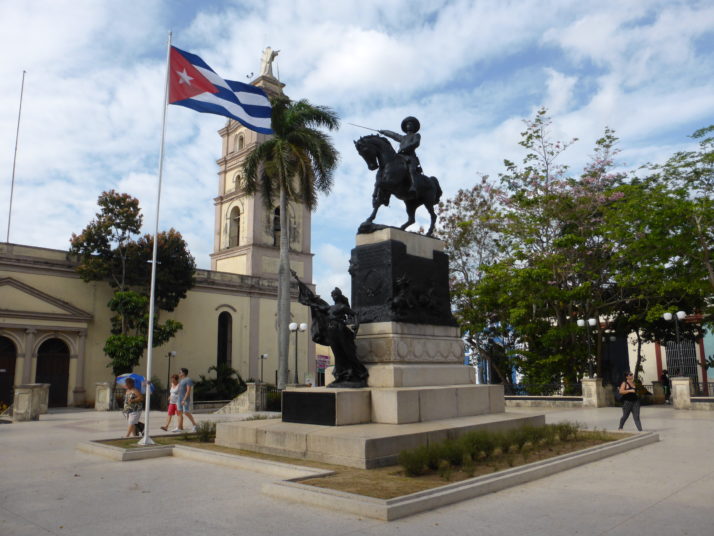
Parque Ignacio Agramonte, Camagüey
We loved wandering the twisty, winding streets between the parks and plazas, a layout which is unique to Camagüey and was designed to thwart looting pirates, admiring the many churches and restored buildings, and of course we had to visit the huge outdoor market where we scored some free cake!
Santa Clara
|

|
| Good for: |
The Che Checklist |
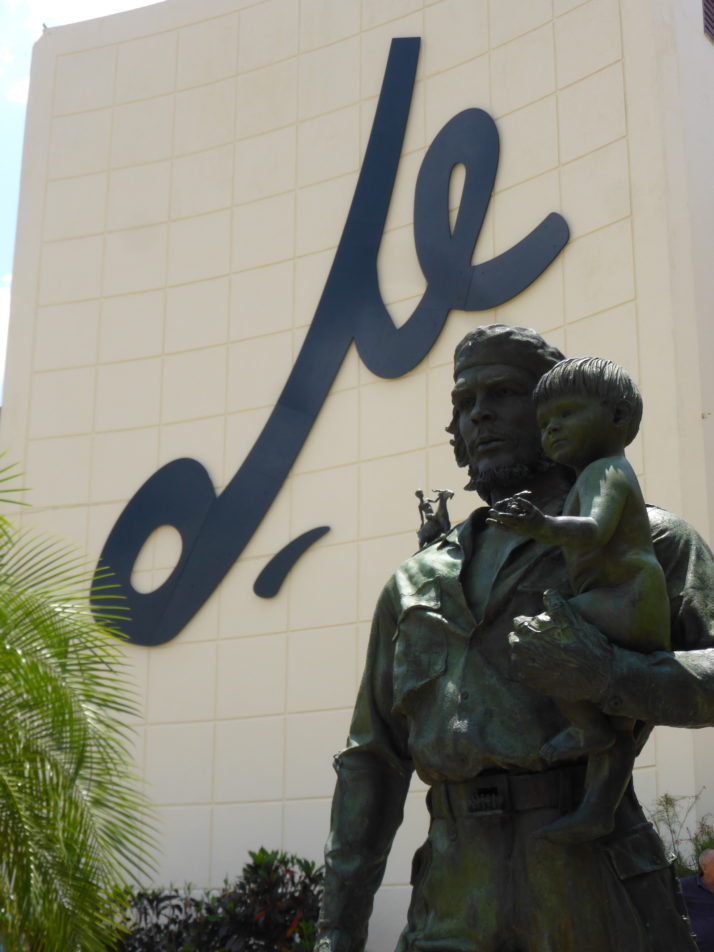
Che y Niño, Santa Clara
For us there’s really only one reason to visit Santa Clara, and that was to get our fill of all things Ernesto ‘Che’ Guevara. His mausoleum has an excellent museum and we also enjoyed the details in the life-sized statue of
Che y Niño on the other side of the city. Even walking between all the sights, we had time to spare so we think at day at most is all we’d recommend in this hassle-heavy city.
Varadero
|

|
| Good for: |
Beaches. Yes, they’re as good you’ve heard |
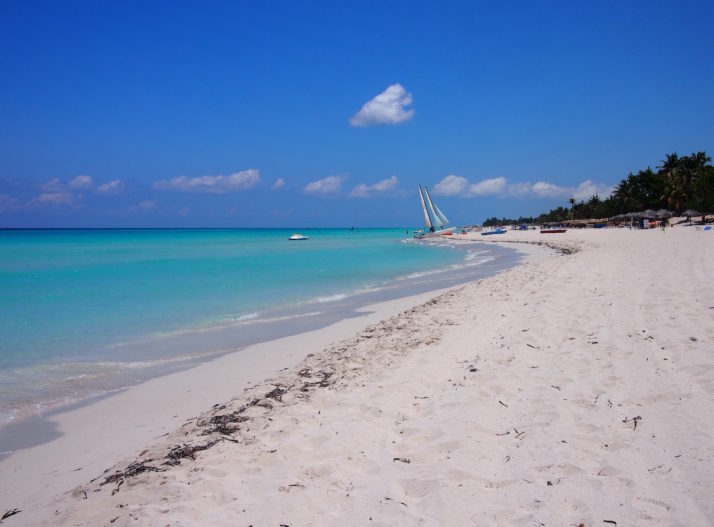
Varadero beach
A beautiful beach town that doesn’t feel at all like the rest of Cuba – except for the queuing! It’s cleaner, the cars are immaculate and don’t belch black fumes, but the prices are higher as a result of the single-minded tourist focus. But the beaches and that clear, clear, turquoise water..
Matanzas
|

|
| Good for: |
Faded grandeur |
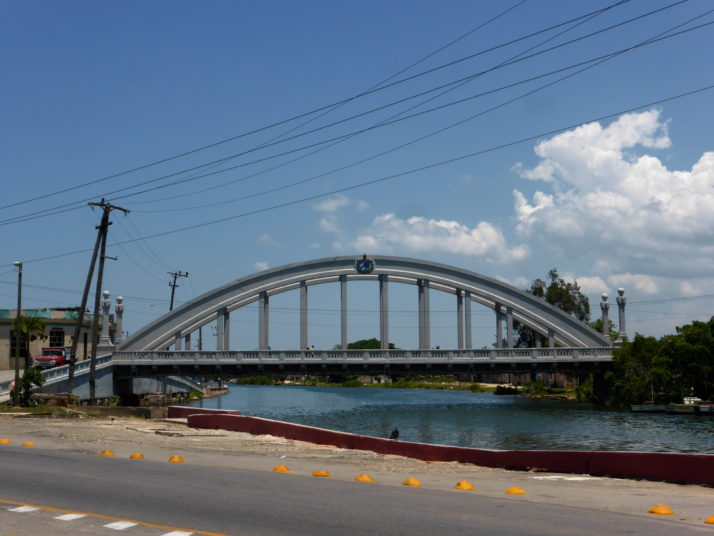
Puente Sánchez Figueras, Matanzas
Known as the city of bridges, Matanzas was just what we needed after a few days in Varadero to gently remind us that we were still in Cuba. A good balance of architecture, history and an excellent pharmacy museum.
Havana
|

|
| Good for: |
The Malecón, Habana Vieja’s rejuvenation (Old Town), Cemetery |
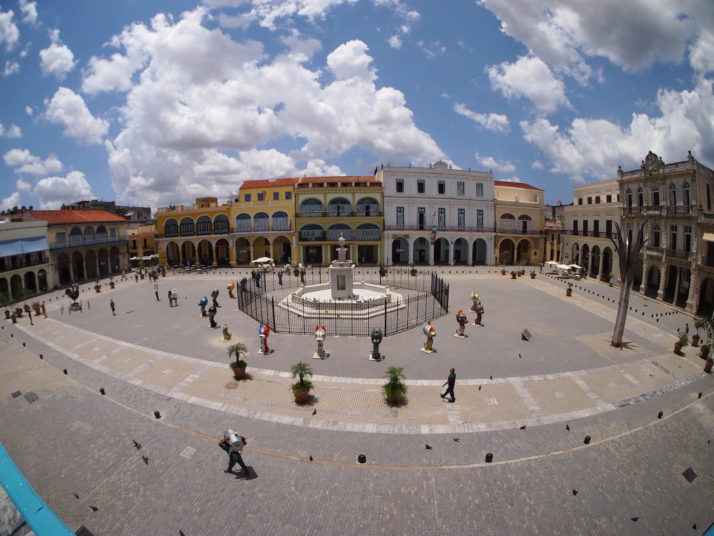
Plaza Vieja, Havana
We spent nearly two weeks in the capital city of Havana – walking the length of the famous sea-wall Malecón, admiring the astounding restoration work of the City Historian’s office in the old town (and seeing how much work they have ahead of them), taking our time in
the best art museum in Cuba, the Necrópolis Cristóbal Colón cemetery, the Hershey Train, and
Fusterlandia are just a handful of our favourite experiences.
Viñales
|

|
| Good for: |
Tranquil landscapes |
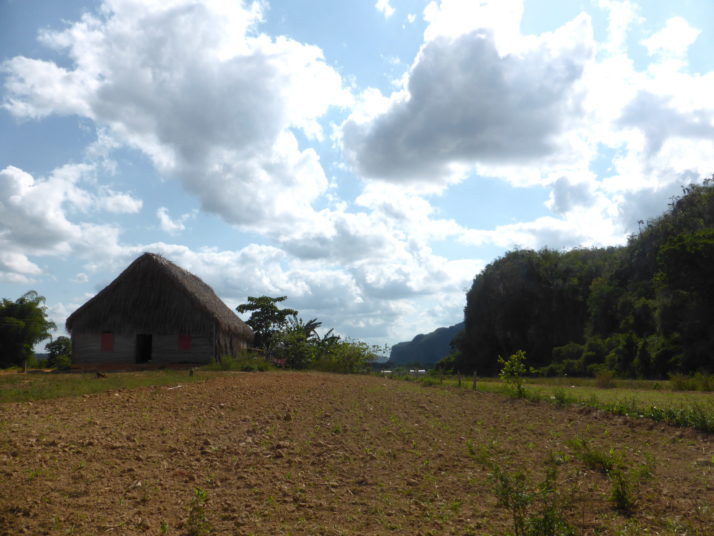
Tobacco drying house and mogote (steep-sided limestone hill), Viñales
Our original plan didn’t include the Valle de Viñales as it’s a full day of travel there and back from Havana, but everyone we met who’d been said it was worth it. They were right – strolling and cycling on our own, seeing more farmers than tourists in the lush, mogote strewn, tobacco growing region of Cuba was a tranquil experience we thoroughly enjoyed.
Trindad
|

|
| Good for: |
Pretty cobbled streets, restored architecture |
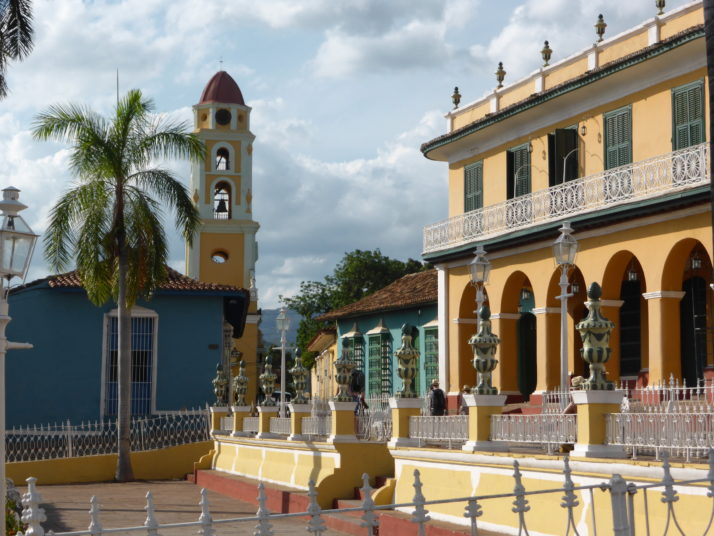
Plaza Mayor, Trinidad
Beautiful, picture-postcard and UNESCO appointed Trinidad is a lot smaller than its reputation implies. We loved the quiet cobbled streets, live music and shows just off the main plaza and venturing into the Valle de los Ingenios to learn about Cuba’s sugar producing past.
Sancti Spíritus
|

|
| Good for: |
To see Cubans without tourists |
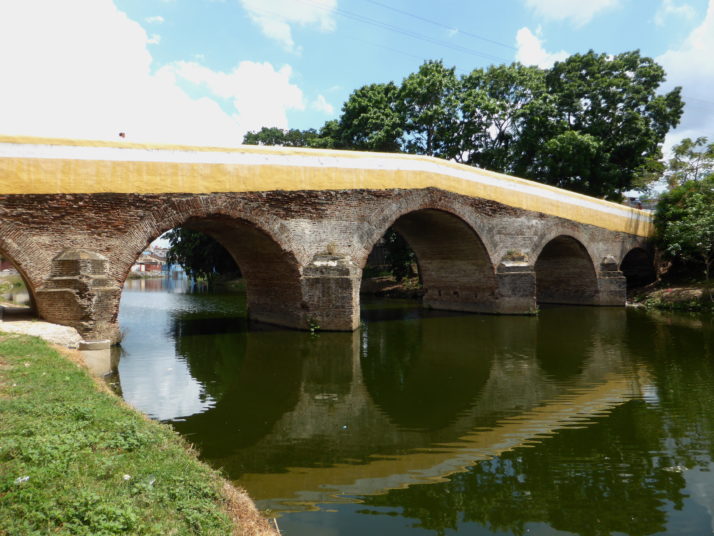
Puente Yayabo, Sancti Spíritus
Known for its pretty little bridge and the invention of the guayabera – a white, 4-pocketed men’s shirt – our brief pause in Sancti Spíritus was a pleasant relief from the heavily touristed Trinidad to experience Cuba as the Cubans do.
Morón
|

|
| Good for: |
A giant cockerel that crows at 6am! |
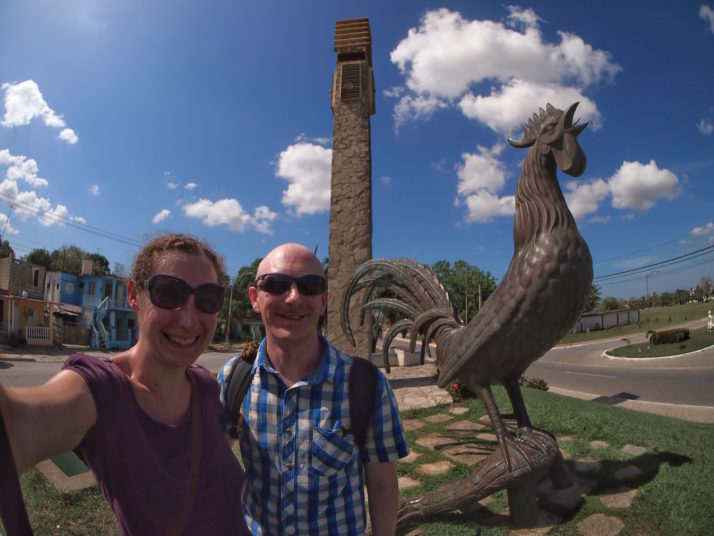
Us with the ‘Gallo’ (cockerel), Morón
This rural Cuban town is known as the City of the Cockerel – immortalised by a giant bronze statue that greeted our entrance and crows at 6am every morning. We enjoyed looking around the beautiful old train station too.



























 two year trip
two year trip